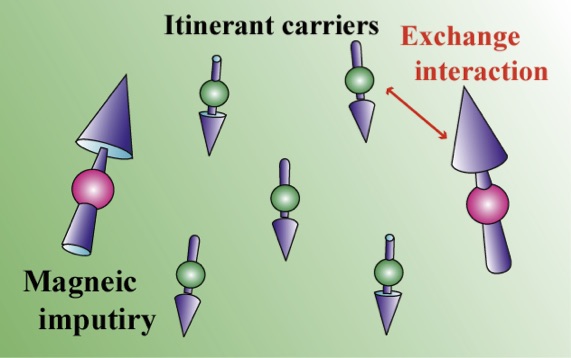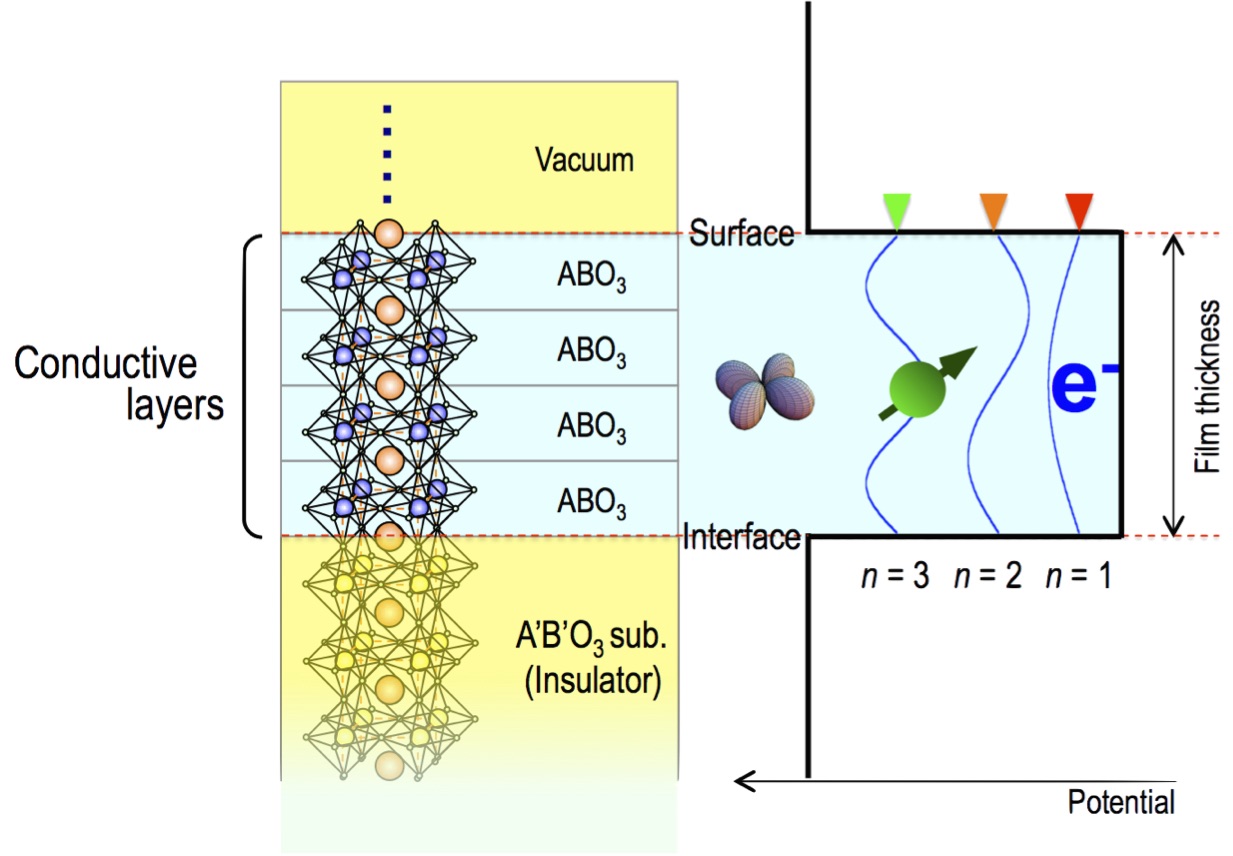The research targets are functional electronic materials, e.g., magnetic semiconductor and transition-metal oxide, which are key materials for future electronics.
Ferromagnetic semiconductor (FMS)

Magnetic semiconductors, which are semiconducors (for example, GaAs and TiO2) doped with magnetic element (mainly 3d transition metal) dilutely, demonstrate unique physical properties derived from the host semiconductor and magnetic substance.
The aim of this study is to figure out fundamental indicators for material design of FMS toward spintronics device application from the electronic stucture point of view.
Transition-metal oxide (TMO)

Oxides have attracted much attention for its potential for future oxide electronics because of the thermal stability and wide-range controllability of condictivity (metal to insulator).
Our group take particular note of oxide ultrathin films, thickness of which is in atomic scale (a few nm). In such ultrathin films, quanum-mechanical effects become noteceable and the systems show novel quantum physical properties.
Based on electronic-structure analysis on TMO ultrathin films, we try to understand fundamental behavior of correlated electrons confined in the nm scale.
Synchrotron radiation spectroscopy (SRS)

We basically perform experiments using x-ray beam at synchrotron radiation facilities.
Sychrotron radiation light sources enable us to use highly-brilliant forcuced x-ray beam with wide energy range (from seveal tens eV to keV).
In particular, direct observation of band structure and element-specific measurement using core-level excitation are powerful tools for electronic-structure analysis of materials.